Capturing the Colors of Rajasthan: Welcome to my India Rajasthan Photography Journey Through India’s Jewel
A trip in India is always an event ! For once, this was not a professional trip, but a two-week trip to visit Rajasthan, the famous state in Northern India known for its historical hill forts and palaces. Rajasthan is also called “the Land of Kings”.
Welcome to a land where history, culture, and vibrant colors collide—welcome to Rajasthan, India’s jewel of the desert. Join us on a mesmerizing photography trip as we embark on a journey through the most incredible places this enchanting region has to offer.
The trip started from Delhi, and went through the most incredible places to visit in Rajasthan, including:
- Agra: Taj Mahal and Agra Fort
- Jaipur: City palace, Panther Mantar (Astronomical Observatory), Hawa Mahal (Palace of Winds), Amer Fort and more…
- Ranthambhore Tiger Reserve: Unfortunately, luck was not on our side, so you won’t see any tigers in this album 😉
- Pushkar: Colourful and amazing market road and bazaar, a paradise for photography
- Udaipur: Dominated by the massive City Palace, which overlooks Lake Pichola
- Ranakpur: Most famous Jain temple, which dates to 15th century
- Jodhpur (called ‘sun city’): Spectacular blue city and its Mehrangarh fort
Delhi to Agra – The Taj Mahal and Agra Fort
Our journey begins in the bustling streets of Delhi, where the chaos and energy of India’s capital city serve as the perfect introduction to our adventure. From here, we make our way to Agra, home to two of India’s most iconic landmarks—the Taj Mahal and Agra Fort.
As we stand in awe of the majestic Taj Mahal, bathed in the golden light of dawn, we are reminded of the enduring beauty and timeless elegance of this architectural masterpiece. With each click of the shutter, we capture the intricate details of its marble facade and the ethereal beauty of its reflecting pools.
Next, we explore the imposing walls of Agra Fort, a UNESCO World Heritage site that bears witness to centuries of Mughal history and grandeur. From the towering gates to the exquisite palaces within, Agra Fort offers a wealth of photographic opportunities, each one more breathtaking than the last.
The Taj Mahal was commissioned by the Mughal emperor Shah Jahan in memory of his beloved wife, Mumtaz Mahal, who died in 1631 while giving birth to their 14th child. Construction of the Taj Mahal began in the same year and lasted approximately 22 years, ending around 1653.
The Taj Mahal is a splendid example of Mughal architecture, combining elements of Islamic, Persian, Turkish, and Indian architecture. The monument is primarily constructed from white marble, adorned with inlaid gemstones and intricate decorative motifs.
Both the interior and exterior of the Taj Mahal are richly decorated. The interior walls feature floral motifs, Quranic calligraphy, and geometric patterns, while the gardens are laid out in symmetrical and geometric designs. Inlaid gemstones such as lapis lazuli, jade, and coral add a touch of luxury to the decoration.
The Taj Mahal is surrounded by vast gardens and several other historic buildings, including the Taj Mahal Mosque and the Jawab (a symmetrical building to the mosque).
The Taj Mahal was inscribed on the UNESCO World Heritage List in 1983 in recognition of its exceptional cultural and historical value.
Note: Please do not pay attention to the poor quality of this picture, this was taken long time ago from a very basic camera. For future travelers, please note that December is probably not the best time to visit Taj Mahal because of the heavy fog, especially in the mornings. All other pictures are from this trip 😉
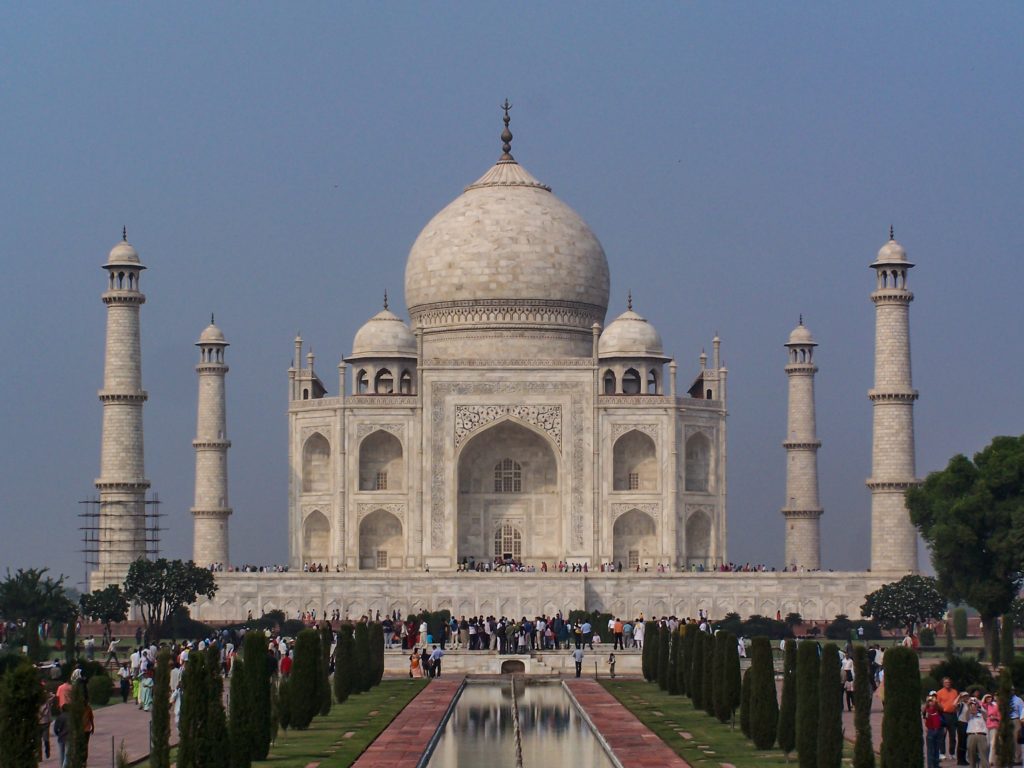
Here we go with a Taj Mahal picture end of afternoon in December, mostly spectacular:
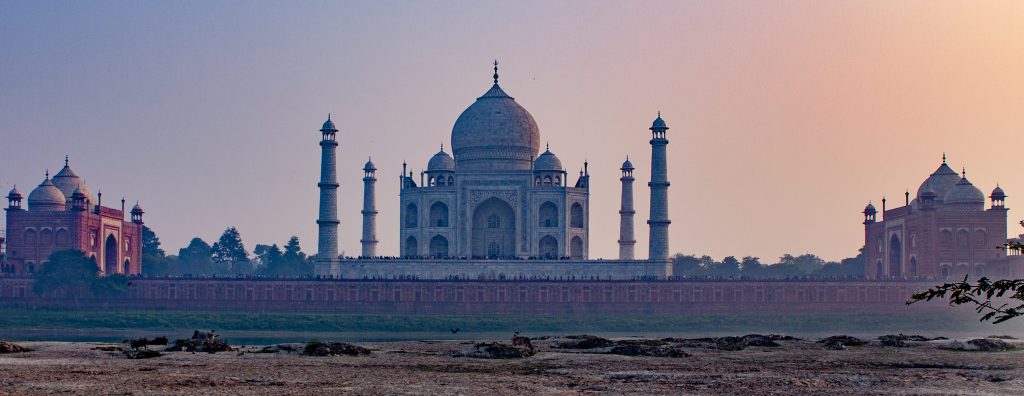
Agra: The Agra Fort (Red Fort)
The Agra Fort was built in the 16th century by the Mughal emperor Akbar between 1565 and 1573. It served as the seat of power for the Mughal Empire for several generations and was the residence of many Mughal emperors, including Shah Jahan, who was imprisoned by his son Aurangzeb in the fort after the construction of the Taj Mahal.
The Agra Fort is a remarkable example of Indo-Islamic architecture, blending elements of Hindu and Islamic architecture. It consists of numerous buildings and palaces adorned with richly decorated floral motifs, Quranic calligraphy, and mural frescoes. The interiors of the palaces also feature vaulted ceilings, elegant archways, and intricately carved pillars.
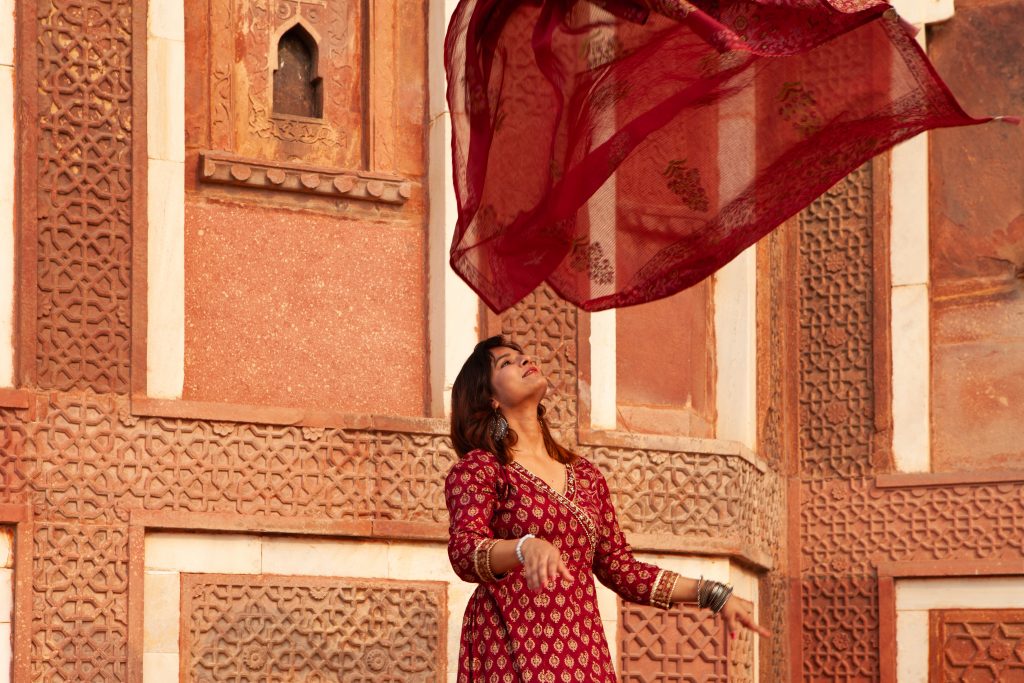
Fatehpur Sikri
Fatehpur Sikri was founded by the Mughal emperor Akbar in 1569, who made it his imperial capital for nearly 15 years. The city was built to celebrate the long-awaited birth of Akbar’s heir, Prince Salim, who later became Emperor Jahangir.
Fatehpur Sikri is renowned for its impressive architecture, which combines Hindu, Muslim, and Persian elements. The complex is primarily constructed from red sandstone.
Despite its historical and architectural significance, Fatehpur Sikri was abandoned in 1585 due to water supply and security issues. Emperor Akbar moved the Mughal empire’s capital to Lahore.
Diwan-i-Khas (Private audience halls):
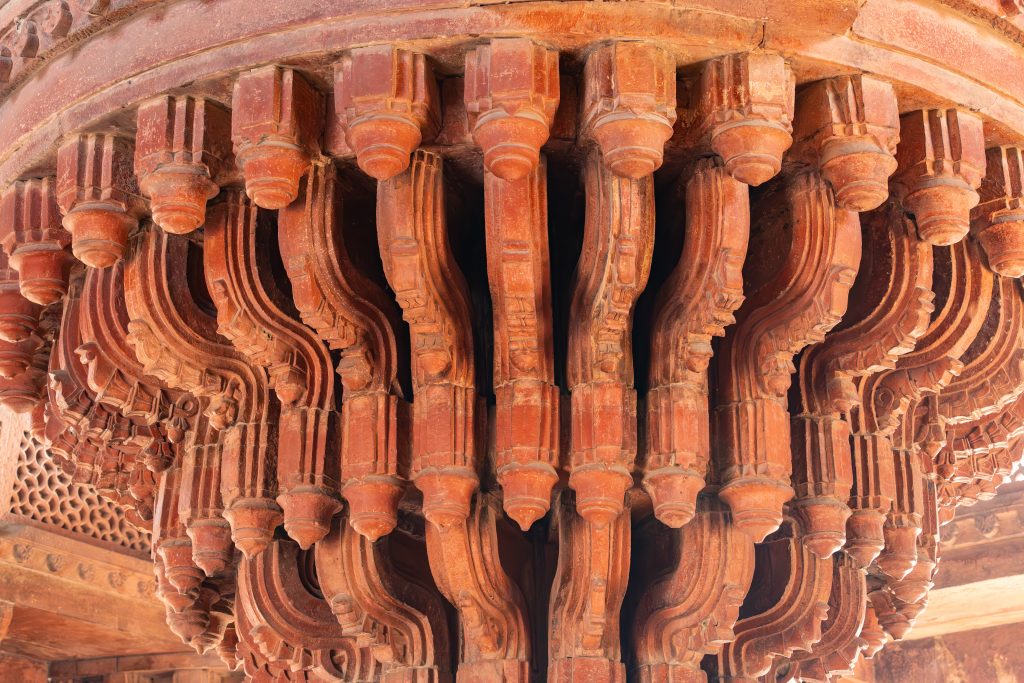
Jaipur – The Pink City
Our next stop is Jaipur, the vibrant capital of Rajasthan and affectionately known as the Pink City. Here, we immerse ourselves in the rich tapestry of Rajput architecture and culture, capturing the essence of this historic city through our lenses.
At the City Palace, we marvel at the ornate gateways and intricately carved facades that tell the story of Jaipur’s royal past. Nearby, the Jantar Mantar, an astronomical observatory built in the 18th century, offers a fascinating glimpse into India’s scientific heritage.
No visit to Jaipur is complete without a stop at the Hawa Mahal, or Palace of Winds, whose delicate honeycomb facade is a photographer’s delight. And of course, we cannot miss the majestic Amer Fort, perched high on a hilltop overlooking the city, where we capture panoramic views of Jaipur’s skyline against the backdrop of the Aravalli hills.
The Amber Fort was constructed in the 16th century by King Man Singh I, a general of the Mughal emperor Akbar. The fort was expanded and renovated by his successors over the following centuries.
The Amber Fort is a remarkable example of Rajput and Mughal architecture, blending elements of Hindu and Islamic architecture. It is built from red sandstone and white marble, situated atop a steep hill, offering panoramic views of the surrounding region. The fort is surrounded by fortified walls, watchtowers, and bastions.
Within the Amber Fort are housed numerous sumptuous palaces. Among the most famous palaces is the Sheesh Mahal (Palace of Mirrors), renowned for its walls and ceilings adorned with mirrors and glass.
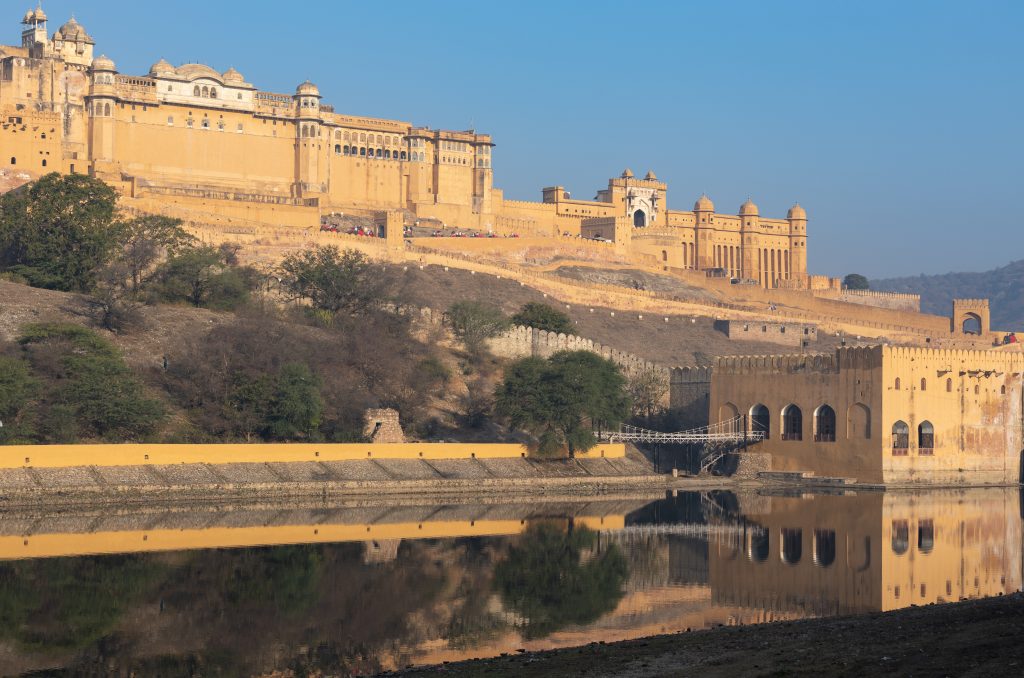

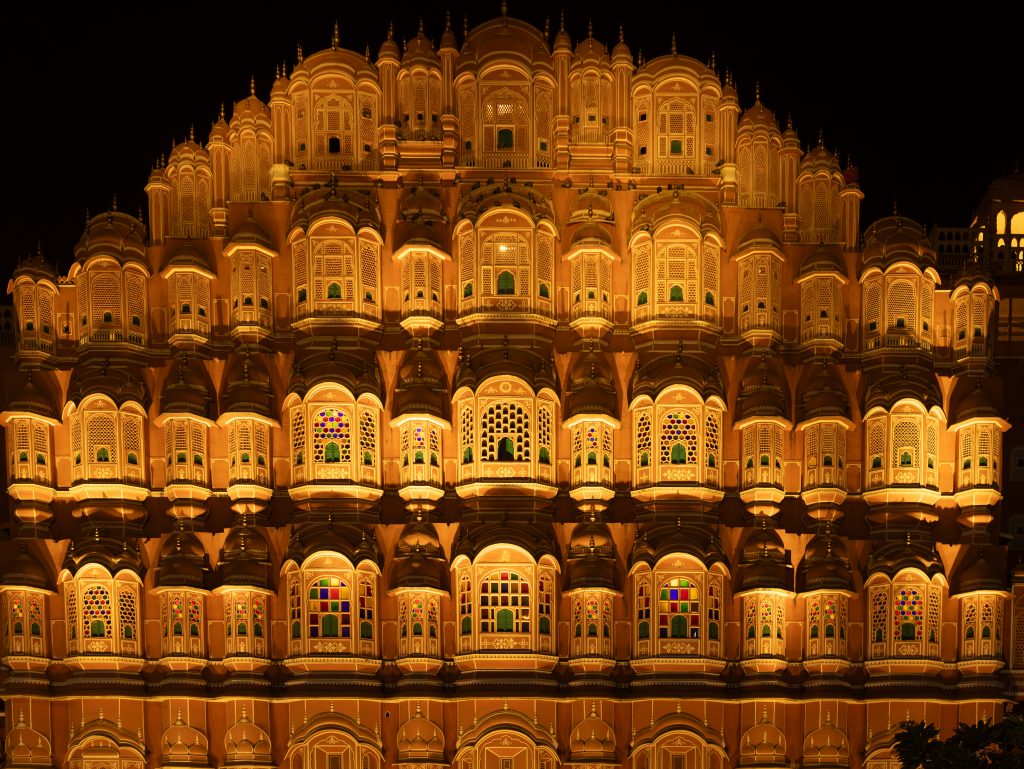
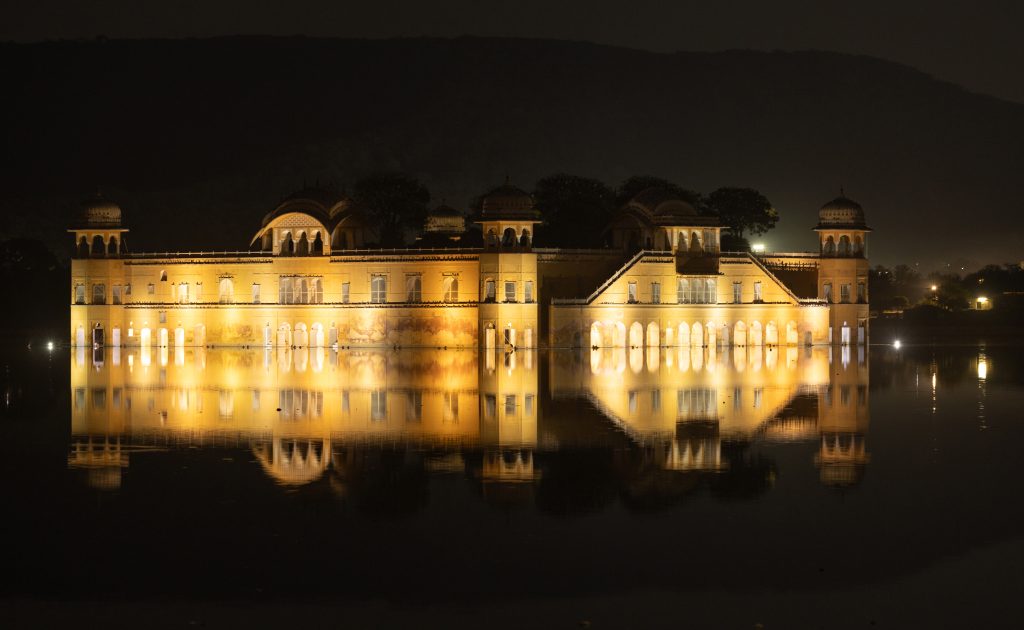
Pushkar
From here, we make our way to Pushkar, a vibrant and colorful town known for its bustling market road and bazaar. Here, we lose ourselves in a maze of narrow alleyways and vibrant market stalls, capturing the kaleidoscope of sights, sounds, and smells that make Pushkar a paradise for photography enthusiasts.
Pushkar is a sacred city for Hindus and is famous for its sacred lake surrounded by temples, among which the Brahma Temple is one of the most significant.
The Brahma Temple is an important pilgrimage site for Hindus. Thousands of devotees come every year to offer their prayers and purify themselves in the sacred waters of Lake Pushkar.
Pushkar’s market offers a unique cultural ambiance, where one can experience the daily life and traditions of the people of the Rajasthan region. Visitors can stroll through the bustling lanes of the market, meet local vendors, and discover a variety of handicrafts, souvenir items, and culinary specialties of the region.

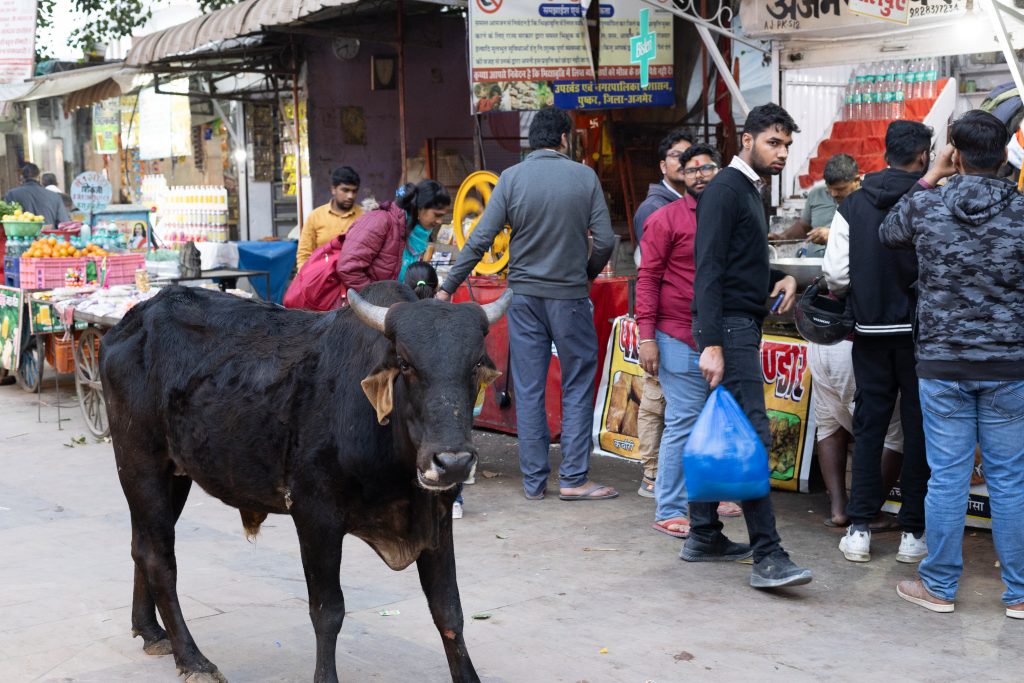
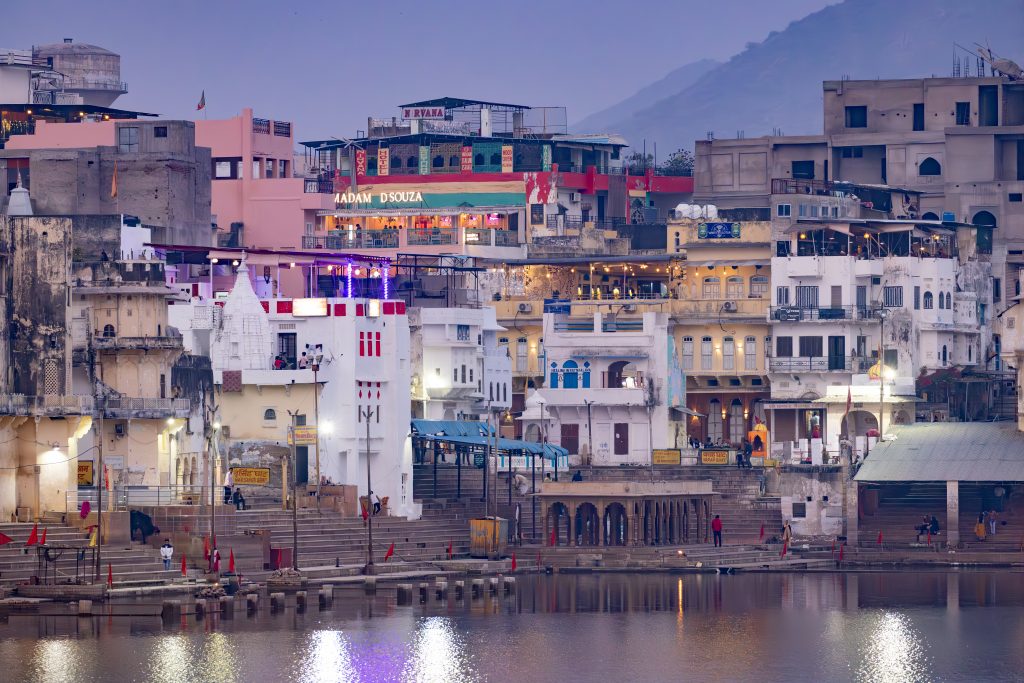
Nagda Sas-Bahu temple
The Sas-Bahu Temple, located in Nagda near Udaipur, is a temple complex dedicated to Vishnu. An outstanding example of Indo-Aryan architecture, it consists of two adjacent temples, one larger (Sas) and the other smaller (Bahu), with its name meaning “mother-in-law” and “daughter-in-law” in Hindi. The temples were built in red sandstone in the 11th century by King Bhoja I of the Paramara dynasty.
The walls and ceilings of the Sas-Bahu Temple are richly decorated with finely carved sculptures depicting deities, demons, musicians, dancers, and mythological scenes. The sculptures are remarkable for their detail and expressiveness, showcasing the craftsmanship of artisans of that era.

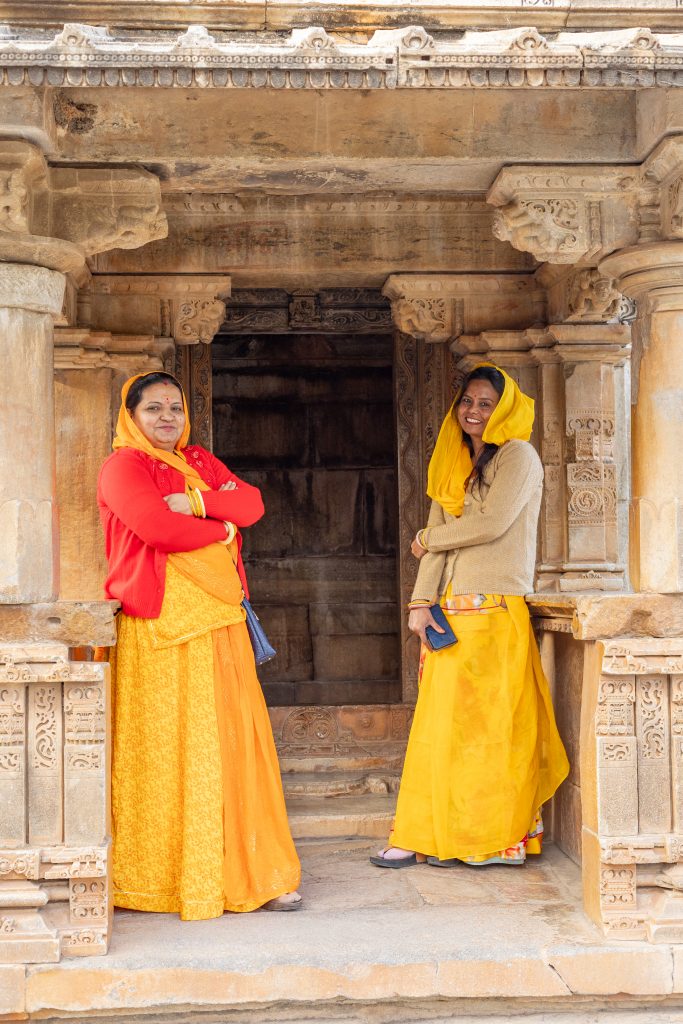
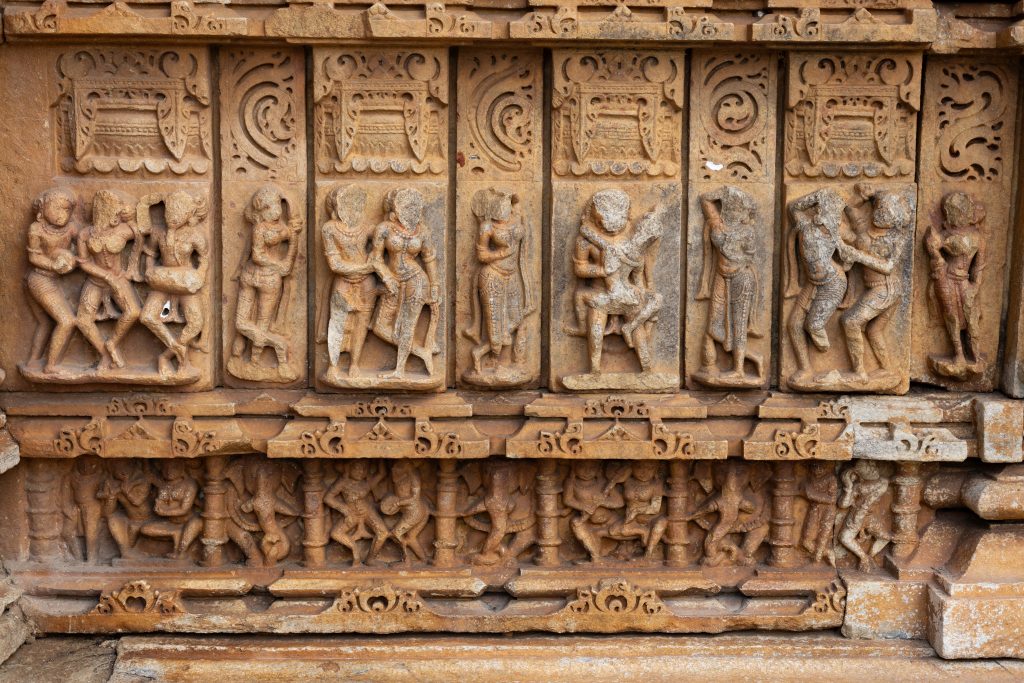
Udaipur – The city of Lakes
Our journey concludes in Udaipur, the romantic city of lakes and palaces. Here, we are greeted by the breathtaking sight of the massive City Palace, which dominates the skyline and overlooks the shimmering waters of Lake Pichola.
As we wander through the labyrinthine streets of Udaipur’s old town, we are captivated by the timeless beauty of its architecture and the serene tranquility of its lakeside vistas. From the iconic Lake Palace to the colorful markets and bustling ghats, Udaipur offers endless opportunities for capturing the magic of Rajasthan’s most romantic city
The City Palace was built in the 16th century by Maharana Udai Singh II, the founder of the city of Udaipur. Construction of the palace continued over the centuries, with each Rajput monarch adding new buildings, pavilions, and decorations. As a result, the palace is a fusion of Rajput, Mughal, European, and Chinese architectural styles.
Situated on the eastern bank of Lake Pichola, the City Palace offers panoramic views of the lake and the surrounding hills.
The City Palace is a remarkable example of Rajput architecture, characterized by domes, towers, balconies, inner courtyards, and elaborately decorated pavilions. Built from white marble and sandstone, its walls are adorned with intricate sculptures, murals, inlaid mirrors, and decorative motifs.
Among the most famous attractions of the City Palace are the nearby Jagdish Temple, the tranquil palace gardens, terraces offering stunning views of Lake Pichola, and exhibitions of royal costumes, ancient weapons, miniature paintings, and art objects in the palace galleries.
While some parts of the City Palace are still used by the royal family of Udaipur, other sections have been converted into museums and exhibition spaces open to the public. The palace is also used for cultural events, royal weddings, and festivals throughout the year.
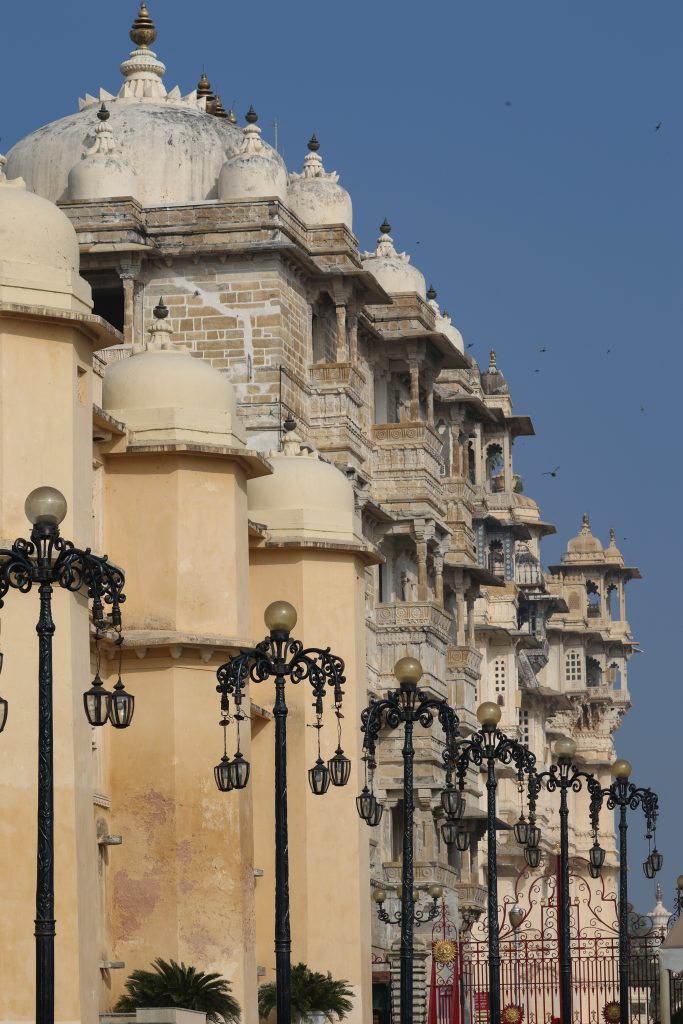

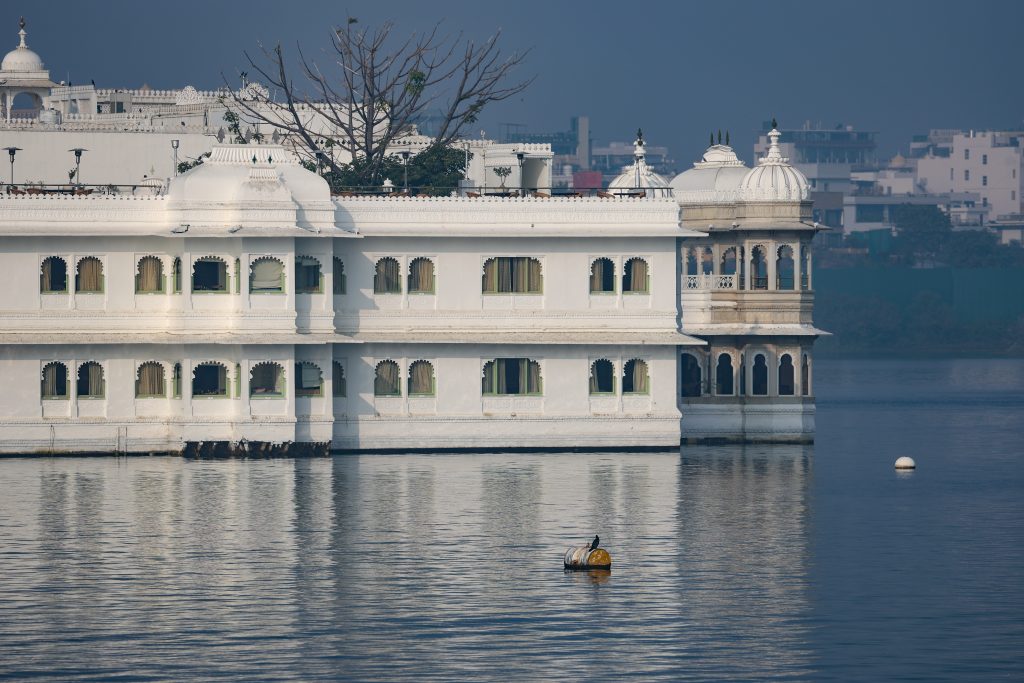
Ranakpur Jain temple
Our final days took us to Ranakpur, home to one of the most famous Jain temples in India. Here, we are awestruck by the intricate marble carvings and exquisite architecture of this 15th-century masterpiece, which stands as a testament to the skill and craftsmanship of Rajasthan’s artisans.
The Ranakpur Temple, one of the largest and most magnificent Jain temples in the country, was initiated by the wealthy merchant Dharna Shah in the 15th century. Built in white marble, it is distinguished by its soaring towers, domes, mandaps (prayer halls), and 1,444 pillars, none of which are alike. The temple is dedicated to Adinatha, the first Jain Tirthankara.
The temple is renowned for its exquisite sculptures that adorn every inch of the temple. The walls, columns, ceilings, and domes are all beautifully carved with floral motifs, divine figures, representations of Tirthankaras, mythological scenes, and Jain symbols. Each sculpture is an example of Jain craftsmanship and artistry, with meticulous attention to detail and symmetry
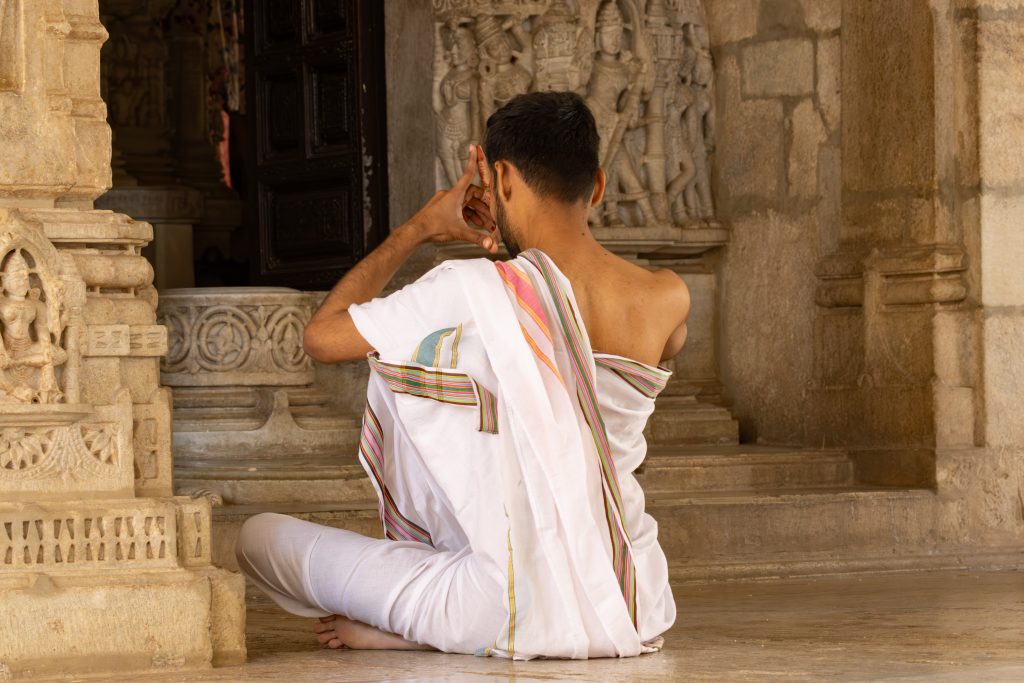

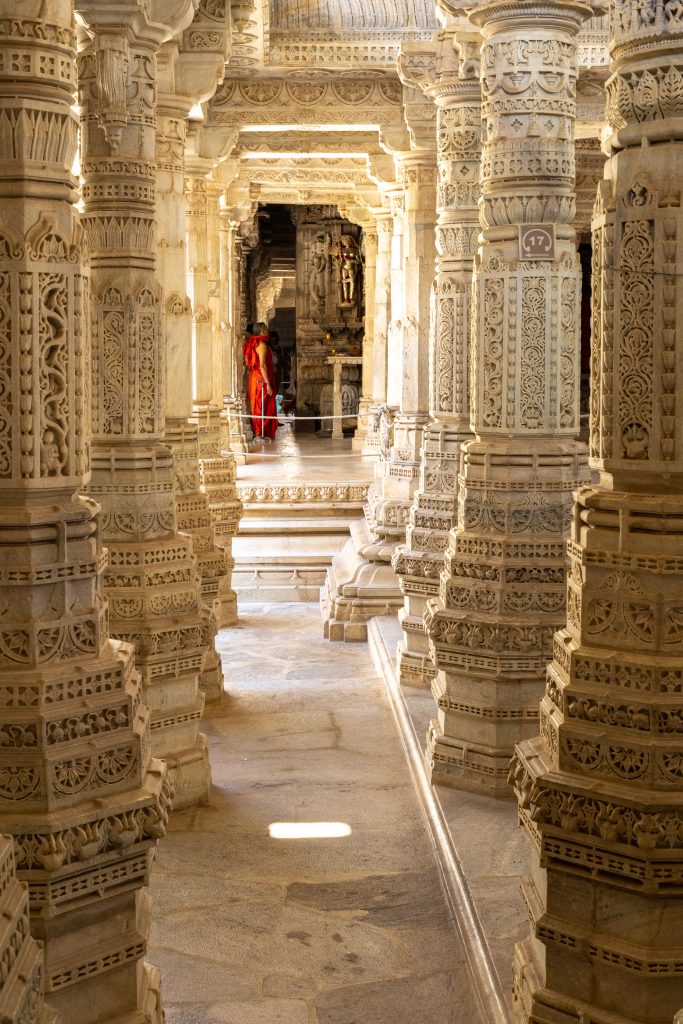

Jodhpur
Finally, we make our way to Jodhpur, the fabled Blue City, where the towering walls of Mehrangarh Fort cast a watchful eye over the city below. As we explore the labyrinthine streets and vibrant markets of Jodhpur, we are struck by the warmth and hospitality of its people, whose smiles and laughter defy the challenges of poverty and adversity.
Jodhpur is famous for its impressive Mehrangarh Fort, one of the most imposing and well-preserved forts in India. Perched on a steep hill, the fort offers panoramic views of the city and its surroundings. The architecture of Jodhpur is characterized by its blue-painted houses, bustling bazaars, ancient temples, and intricately decorated havelis (merchant houses).
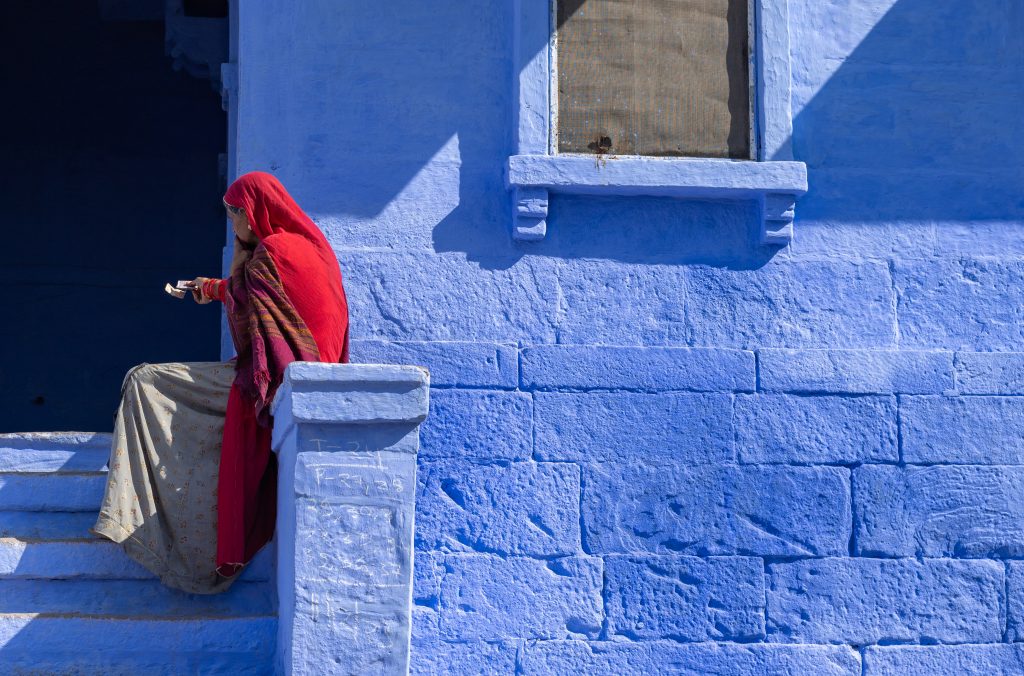
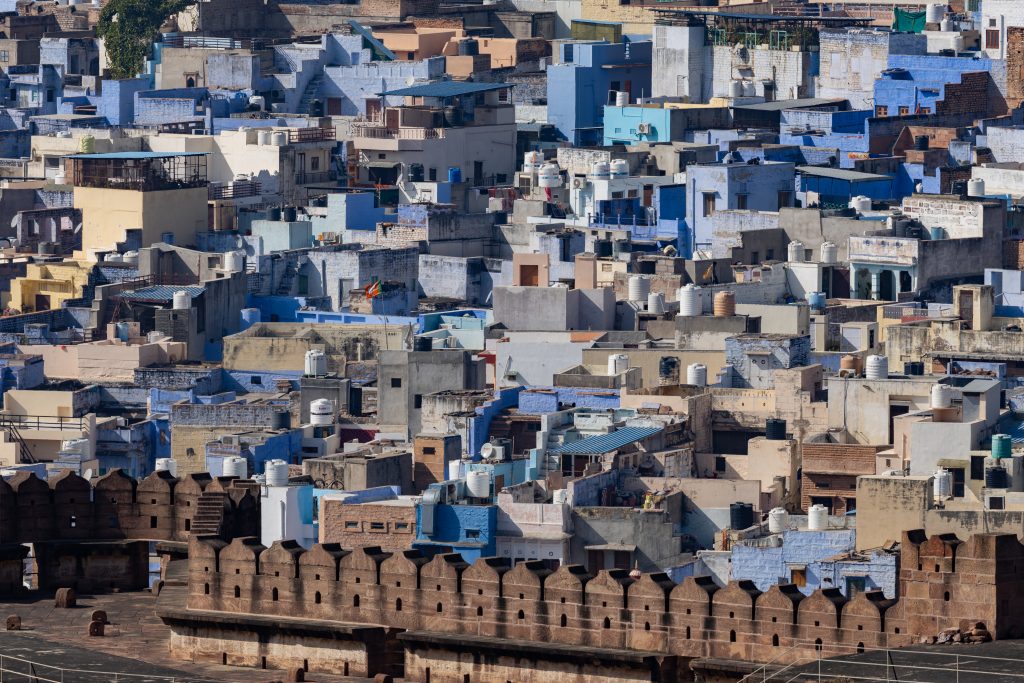
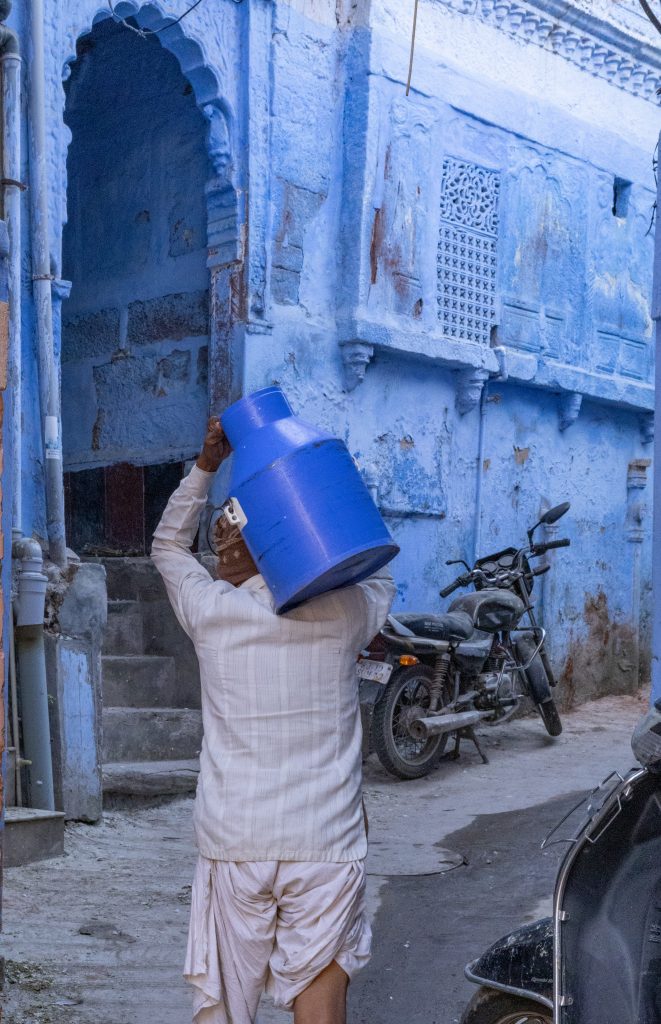
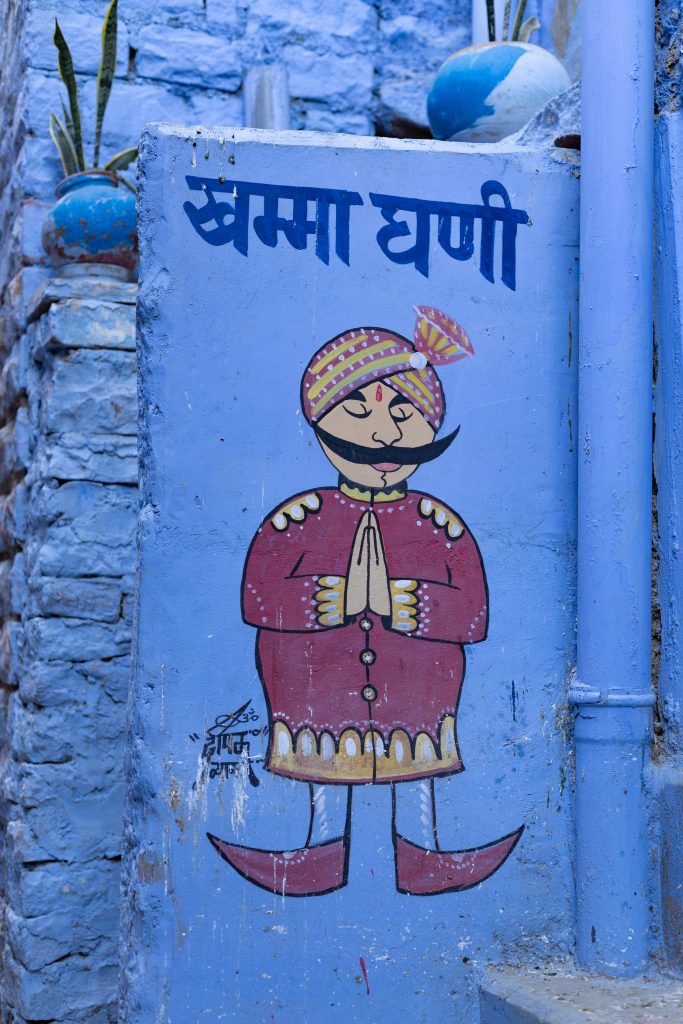
Conclusion: A Journey of Discovery and Wonder
As we bid farewell to Rajasthan, we carry with us memories captured in photographs—memories of ancient palaces and bustling bazaars, of rugged landscapes and colorful markets, and, above all, memories of the joyful spirit and indomitable resilience of the people who call this land home. Rajasthan may be known for its forts and palaces, but it is the warmth and hospitality of its people that leave the most lasting impression—a reminder that the true beauty of India lies not just in its monuments, but in the hearts and smiles of its people.
Stay tuned for upcoming photography exhibitions featuring images from our unforgettable journey through Rajasthan, India.
A bit of history:
Caste system in India :
1) Brahmins: Brahmins hold the highest rank in the caste hierarchy. They are priests, scholars, and teachers whose role is to preserve and disseminate spiritual knowledge, as well as to perform religious rituals.
2) Kshatriyas: Involved in military, political, and administrative activities, Kshatriyas are warriors, leaders, and protectors of society.
3) Vaishyas: Responsible for the production and distribution of goods, Vaishyas are traders, farmers, and businessmen.
4) Shudras: Shudras are associated with manual laborers and servants, with their main role being to provide manual services for society.
Dalits (Untouchables) are considered outside the caste hierarchy. Historically marginalized and discriminated against, Dalits have been excluded from many social, economic, and educational opportunities. Efforts have been made to combat discrimination against them and promote their inclusion in Indian society.
The Vedas are the oldest and most sacred texts of Hinduism, containing hymns, prayers, mantras, and teachings essential to spiritual practices and philosophy.
The three main gods of Hinduism are Brahma, Vishnu, and Shiva.”
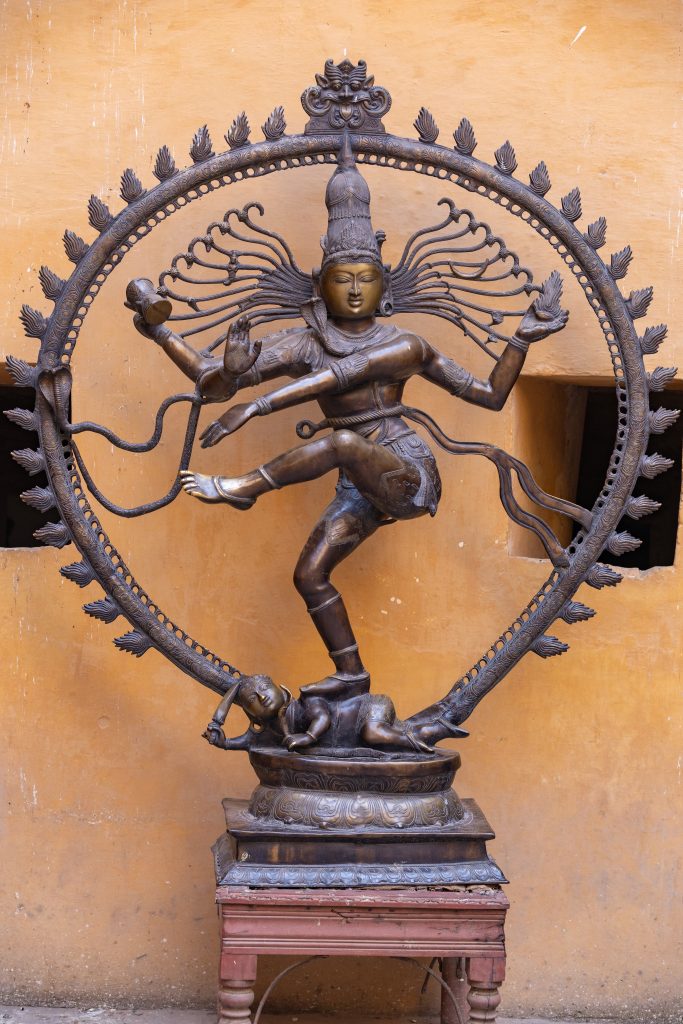


March 21, 2024 Author uday
Great work Jose,.. magnificent photos and good story line
March 21, 2024 Author Johnson
Stunning photos! It seemed like an amazing trip!